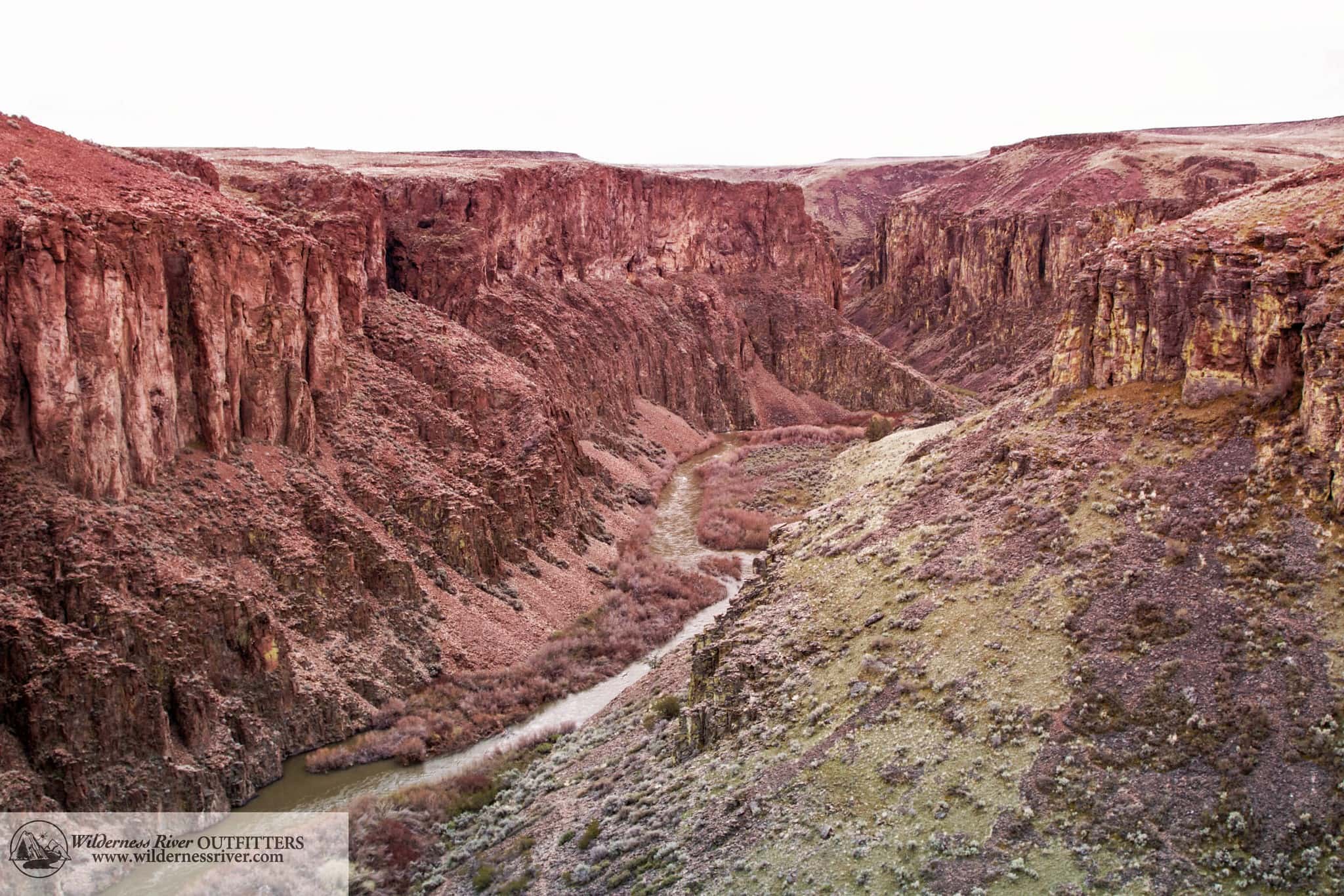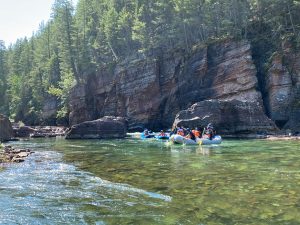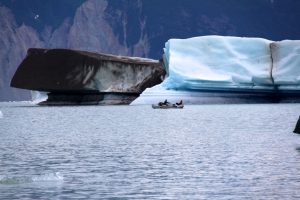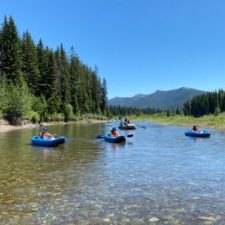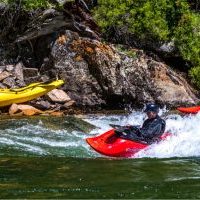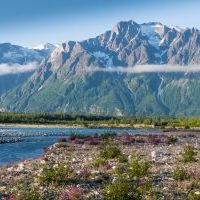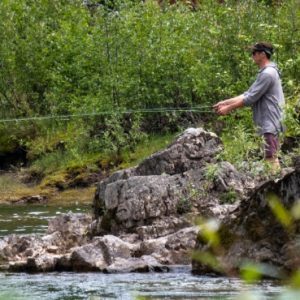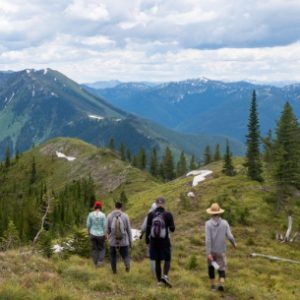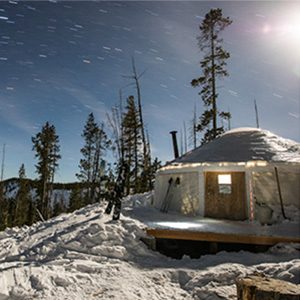Overview
Swift water, boulder-garden rapids, blind corners and steep gradients are all packed into this beautiful wilderness canyon. If you are looking for an exciting class IV multi-day run on a continuous, technical, creeky-feeling river in the middle of some of Idaho’s most unique desert wilderness, the Jarbidge-Bruneau is the trip for you! This slice of desert paradise is known for its technical whitewater and stunning, unique scenery. Often compared to desert landscapes such as Zion National Park, a “mini” Grand Canyon, and even reminders of the Lord of the Rings sets, some of the best of Idaho’s diverse geography is experienced with this river trip, all while challenging yourself with difficult whitewater. WRO’s very own Seth Tonsmeire even claims this trip as one of his favorite rivers to paddle. If you have paddled other Idaho classics and are looking for a section that is new, different and rugged, look no further than the Jarbidge Bruneau.
If you are an advanced paddler and feel comfortable running continuous class III with some solid class IV whitewater, this is a great trip for you. This is not a trip for beginner kayakers! (See WRO’s hardshell skill requirements here.)
Trip Highlights
6 days, 70 miles
Fun, technical, pushy whitewater (Class III+-V)
River character: technical, boulder-drop, continuous, creeky, challenging pool-drop
Towering canyon walls
Stunning vistas
Intimate group sizes
Birds of prey
Desert wildlife
Hot springs
Remote
The Jarbidge originates on the remote border of Idaho and Nevada at the base of the Jarbidge Mountains. Spring run-off sends this creek-size river into a frenzy of fast corners and big, technical whitewater. Surrounded by steep rhyolite canyon walls and juniper forests, this small desert river tumbles about 50 ft. per mile, creating one of the best whitewater runs in Idaho. Several sections are continuous class III – IV boulder garden rapids, with two notable class V rapids that are portagable. The canyon gives you a committing “boxed in” sort of feel. Given the extremely remote location and technical whitewater, we usually have the canyon all to ourselves.
The beautiful high desert plateau comes alive in early spring with delicate desert wildflowers and a wide array of whistling songbirds, birds of prey, bighorn sheep, mountain lions, baby goslings and coyote. Aside from the awesome paddling, there are great hiking and exploring opportunities along the way. Visit a natural arch, hike up to the canyon rim for a breathtaking vista, or lie down by the water’s edge and watch the falcons and swifts fly overhead. As we pass the confluence of the West Fork of the Bruneau, we enter the narrow, red-walled gorge. Once on the Bruneau, the whitewater mellows and you can immerse yourself in the dramatic scenery of the canyon, with some fun, punchy big-water style rapids. Stunning side canyons provide perfect afternoon outings and each evening we will enjoy delicious dutch oven dinners around a campfire and relive the day’s adventures! Five Mile Rapid series, close to five miles of fairly continuous class III+-IV punchy waves, is the grand finale of the trip, and often a fan-favorite.
Why Raft Support?
When self-support kayaking, you often have to be a minimalist. When traveling with raft support, you are able to bring all your heart desires, and probably more! Our rafts carry all of your personal things (costumes and dry shoes anyone?), and other items that self-support boating does not allow for such as coolers for gourmet food prepared for you (no more ramen and MREs!), beer, extensive safety supplies, a full-sized firepan with a daily fire, latrine facilities, logistics taken care of, etc. Without the bulky weight of your gear in your kayak, it allows for quicker, more responsive (and fun!) paddling, and also opens up possibilities for more low-volume styles of boats for those looking to spice up the class IV.
If running this type of river without ever seeing it makes you nervous, or you are traveling alone, having a safety kayaker/ kayak guide is a great way to travel. Traveling with one of our knowledgeable safety kayakers is a great way to gain confidence and expertise through this technical run. Lastly, this type of trip also allows for you to bring non-kayaker family and friends to also be able to enjoy a perfect river vacation for everyone involved.
The Stats
| Departure Month | May |
| State / Region | |
| Adventure Level | High |
| Price Range | $2000 - $3000 |
| Activities | Hard Shell Kayaking |
Logistics
This trip is relatively simple logistically for your travel plans as it begins and ends in Boise, Idaho (BOI).
WRO Kayak Rentals
WRO has a wide range of playboats, half-slices, and river runner/ creek boats to reserve for the week in a variety of sizes. WRO does not provide paddle, skirts, helmets, PFD’s, or personal dry gear. For more information, contact Seth, [email protected]. (Reservation website coming soon.)
Before the trip:
Travel to Boise, Idaho (BOI) no later than 5:30 pm one day prior to your trip’s launch date, with lodging arranged for this first night. We recommend staying at the Best Western (Vista) Inn for logistic simplicity. The hotel has a free airport shuttle or parking available to leave your car if you plan on driving to Boise.
Plan on meeting for orientation at 6 pm the night before the launch at the Best Western Inn (Vista at the Airport) (1-800-727-5006). Here you will meet your trip leader, other guests that will be on your trip, and we will hand out dry bags, discuss the trip details and answer any last minute questions.
The next morning we will depart the Best Western Inn and drive as a group to the river put-in at Jarbidge Forks (Jarbidge-Bruneau combo), about a 3 hour trip, or to Murphy Hotsprings (Bruneau-only). If doing the Bruneau-only adventure, your adventure will start on your drive in. Though Boise to Bruneau, ID is only about an hour trip, the road down from Hot Springs Road to the put-in is an extreme 4×4 drive, and though only a short mileage to get to the river, we take it very cautiously. This drive getting down will most likely take an additional 1-2 hours. This road becomes unnavigable if it rains, so poor weather may cause trip plans to have to change.
After the Trip:
We provide transportation to Boise from the Bruneau River take out. It is about a 1 hour drive and we usually arrive by late afternoon.
Sample Itinerary
Day before the trip: Arrive in Boise, Idaho no later than 5:30 pm with lodging arranged for this first night. Plan on meeting for orientation at 6 pm the night before the launch at the Best Western Vista Inn. Here you will meet your trip leader, other guests that will be on your trip, and we will hand out dry bags if needed, discuss the trip details and answer any last minute questions.
Day 1: We’ll get an early start for our drive to the river. We typically try to leave around 8 am. After a 2-3 hour drive, we will arrive at the river put-in, where you will meet the rest of the guides with the boats. We will have lunch, gear up, fit lifejackets for those not kayaking, and have a river safety talk before getting on the river. When we push off, we’ll immediately be in the midst of swift rapids. This is an exciting day!
Day 2: More good rapids and some excellent hiking available. The larger rapids are generally narrow chutes between large boulders.
Day 3: In the morning we reach Jarbidge Falls, which rafts may have to line or portage depending on water levels. We’ll reach the confluence with the Bruneau around lunchtime and soak in the natural hot springs. Those boating only the Bruneau will join the trip here.
Day 4-5: We are on the Bruneau now, floating through some of the prettiest canyons in the west. There will be some good class III rapids and lots of opportunities for hiking.
Day 6: Run Five-Mile Rapid in the morning, 3.5 miles of great class III-IV whitewater. We’ll eat lunch along the river and have a mellow float to our takeout around mid-afternoon. Drive back to Boise.
Bruneau Only: Arrive in Boise the day before the trip and drive to the river the next morning. Soak in the hot springs, eat lunch, and then put on the river. Days 2-4 are the same as days 4-6 of the Jarbidge-Bruneau trip.
FAQs
Kayaking/ Miscellaneous
We generally ask that if people sign up for a trip as a kayaker that they plan to paddle the entire trip. This is mainly because we base our number of rafts, guides, and gear distribution off of planning on having people in their kayaks. That being said, we can absolutely make accommodations for individuals in certain situations, (Not wanting to run a particular rapid, medical situations, etc.)
All and all, this is your trip and we are here to ensure you have the best trip possible.
Camp Life and Meals
On the River
Clothing, Footwear, and Gear
Logistics
Book Now
